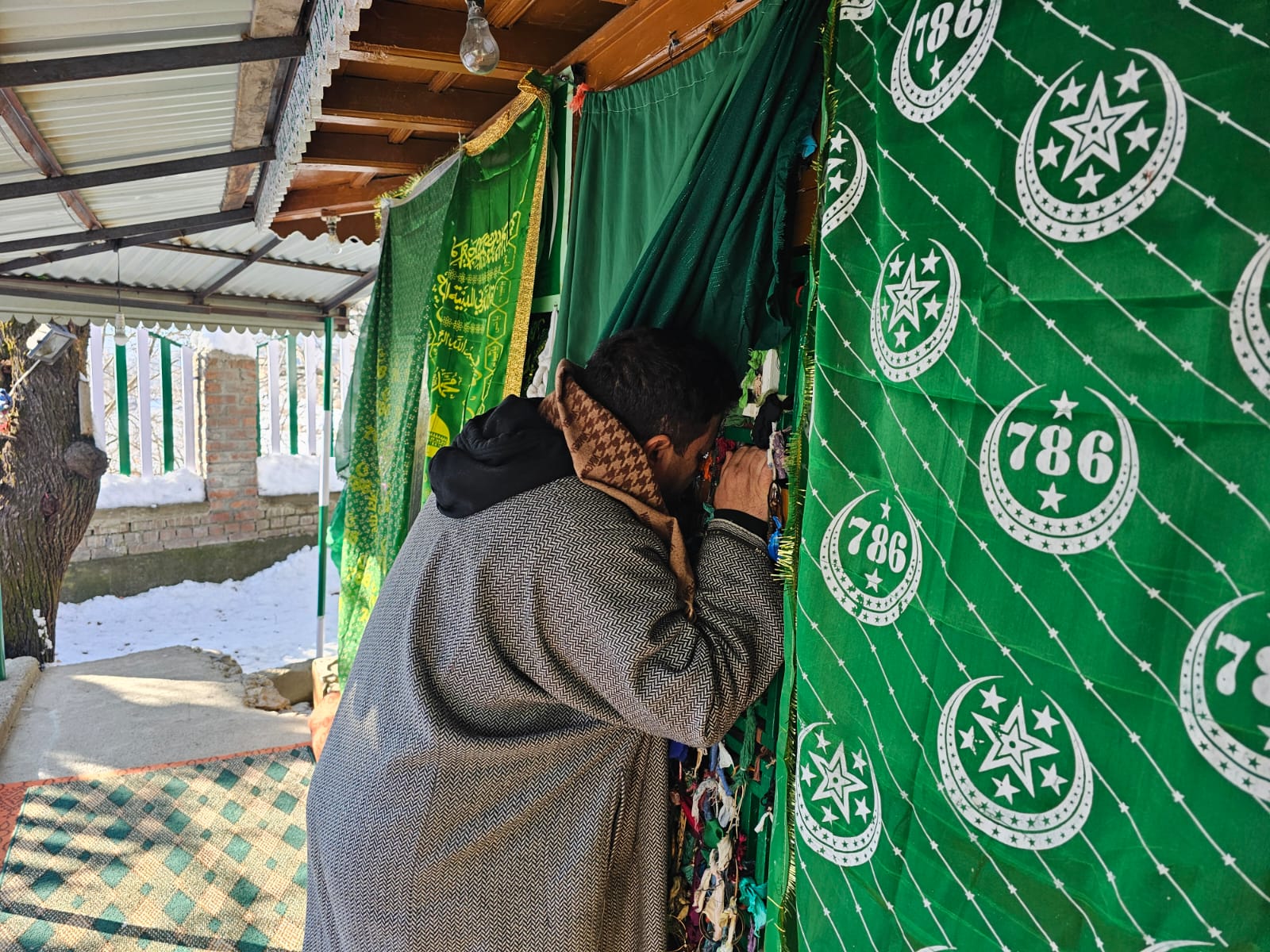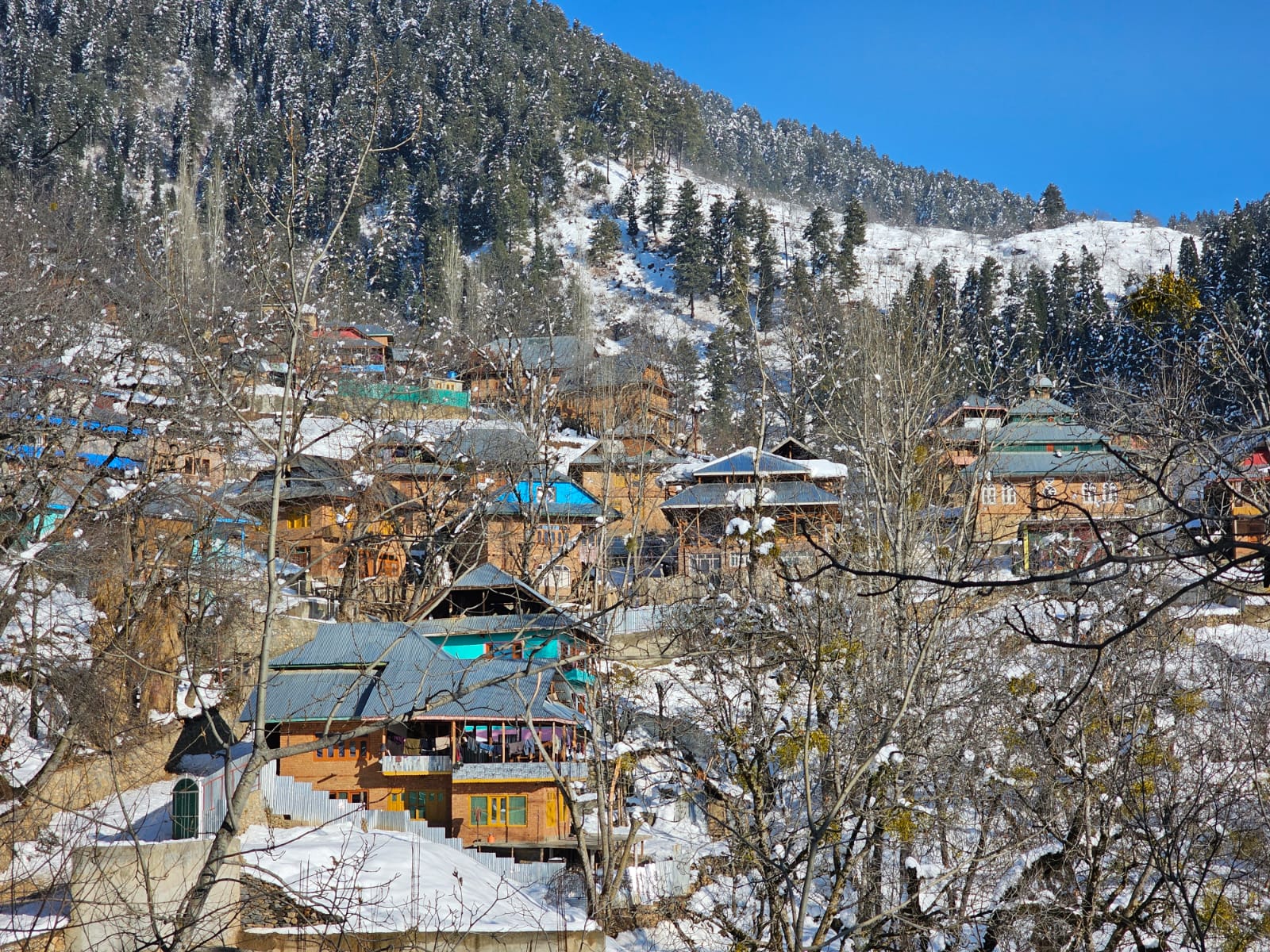_(1).webp)
Nazir Ganaie/Butho, Bandipora
Bashir Ahmad Reshi’s wrinkled face is glistening under the light of snow all around. A scholar and Imam at Butho village in north Kashmir’s Banidpora district, he says, “Ded Mouj, the Saint has been Allah’s blessing on us.”
“This village is unique in many ways. We take pride in the fact that never ever we have seen a conflict among us -be it Muslims or Hindus,” Reshi says. “The (Kashmiri) Pandits in our village never left. Our village is a blessed land.”
Nestled amid hills and almost on a rocky terrain, the village has an abundance of natural resources. “Sometimes, even we wonder how come so many varieties (of food) grow here.”
The village, located about 50 km from Srinagar, is home to 700 people living in 100 houses. Rishi says they believe Ded Mouj, “who sowed diamond” in their village and they continue to harvest its yield.
“This picturesque village is famous for producing more than 2500 quintals of Shallots (Praan) annually, making it the largest producer of the crop in the valley. The village is the first one in the Kashmir Valley to receive organic certification.”
 A local man peeping to have a glimpse of the grave of Sufi Saint Ded Mouj at Butho village
A local man peeping to have a glimpse of the grave of Sufi Saint Ded Mouj at Butho village
The villagers also have a belief that their women always give birth normally for at least one decade while 90 percent of women have delivered in hospitals, and no one had to undergo a cesarian section or any surgical procedure.
Locals attribute this too to the blessings of Ded Mouj. They say after she settled in the village the place saw the eruption of a natural spring. “We believe that because of this water, the expecting mothers deliver normally without undergoing any surgical procedure.
Fayaz Ahmad Reshi, a local teacher of the village says, "90 percent of the deliveries take place in hospitals, and in case of emergency, deliveries do take place here but all happen normally."
Ded Moud (The mother) who was known as Bibi Arifa in her lifetime is an 8th-century Sufi saint, who was born in the Handwara area of north Kashmir.
“In her quest for truth and Islam,” Bashir Reshi, a custodian of her shrine, says, “she followed Baba Shakarud-din (Sufi Saint), by carrying gallons of water on her shoulders from the Wullar Lake to the Shairkot Mountain, where her mentor used to worship Allah in a cave.”
Impressed by her devotion, Baba Shakarud-din ordained that she would have a shrine and place of worship, a privilege given to only a few in the Sufi order. Reshi says, “For Bibi Arifa, her mentor specifically chose the Buthoo area as her place of worship and shrine.
Her shrine of Hazrat Bibi Sang Arifa has recently attracted visitors from around because of yet another belief that Moses was buried here, near what is now an old tree.
As foreigners started visiting the shrine for ‘Moses’ the locals have mixed responses to the claims. The headman and Auqaf committee chairman, Moulvi Bashir Ahmed Reshi said the Moses story was found in a recent book and it triggered a rush to their village.
 Butho village from a distance
Butho village from a distance
Reshi says he has been maintaining a diary with entries of many visitors who came to visit this picturesque village from countries as far as Uganda, Thailand, France, Germany, and America. They had read about the ‘burial site of Moses from some books and articles on the web.
The village remains cut off from the rest of the valley in winter.
“I told them they were mistaken, and Musa (Moses) is not buried in the shrine here,” says Reshi. “The direction of the graves inside the shrine is contrary to how the Christians bury their dead.”
Reshi had pursued Quranic studies at Lucknow University before returning to Bhuto in 1982. He found people from many countries frequently visiting the shrine and started his campaign to address the myth. However, it did not stop followers of Moses from visiting the shrine.
“Every year around 20 foreigners, mostly Christians and Jews visit the village and spend time inside the shrine,” he says.
Reshi says when Bibi Arifa passed away Makhdoom sahib visited the village to offer prayers at her grave.
“If it was Musa’s grave, he would have mentioned it somewhere,” says Reshi, who is looking for more documentary evidence to prove his belief. He says of late not many foreigners have been coming over.
Butho also has the grave of yet another sufi Hazrat Neek Reshi, who is believed to have been a disciple of Bibi Arifa. Another grave in the shrine belongs to Navroz Baba. “He came to Bandipora from Gilgit, where he was a tax collector,” says Reshi.
ALSO READ: Jaipur: Muslims shower petals after Hindu procession halts for namaz
“He came to this village to collect tax from Neek Reshi, but once he collected money from him, he lost his eyesight,” Reshi claims. Eventually, he became a disciple of Neek Reshi and settled in the village. The village, with a population of around 700 people, has 100 households. The tradition is that each household looks after the shrine throughout the year.
